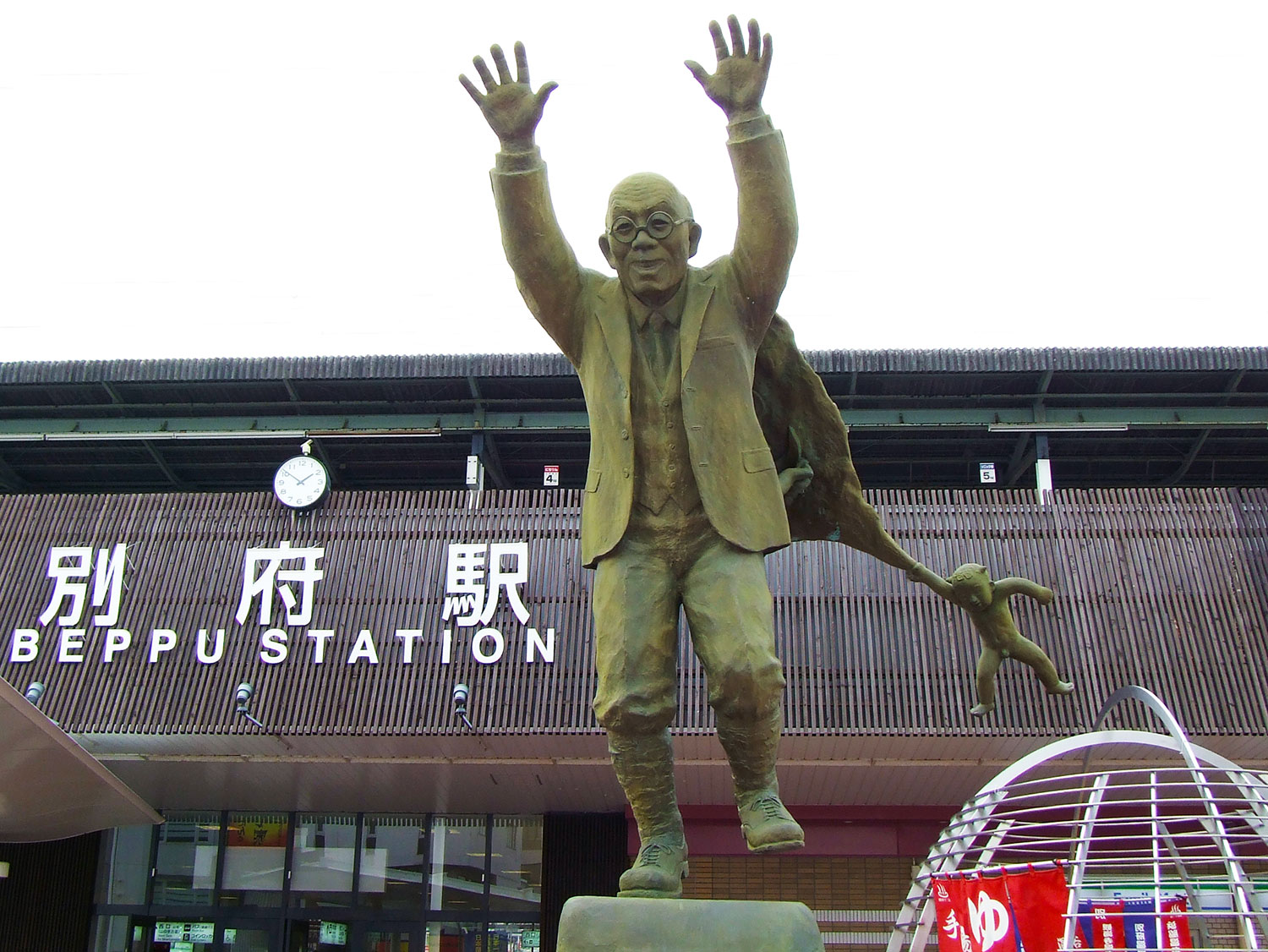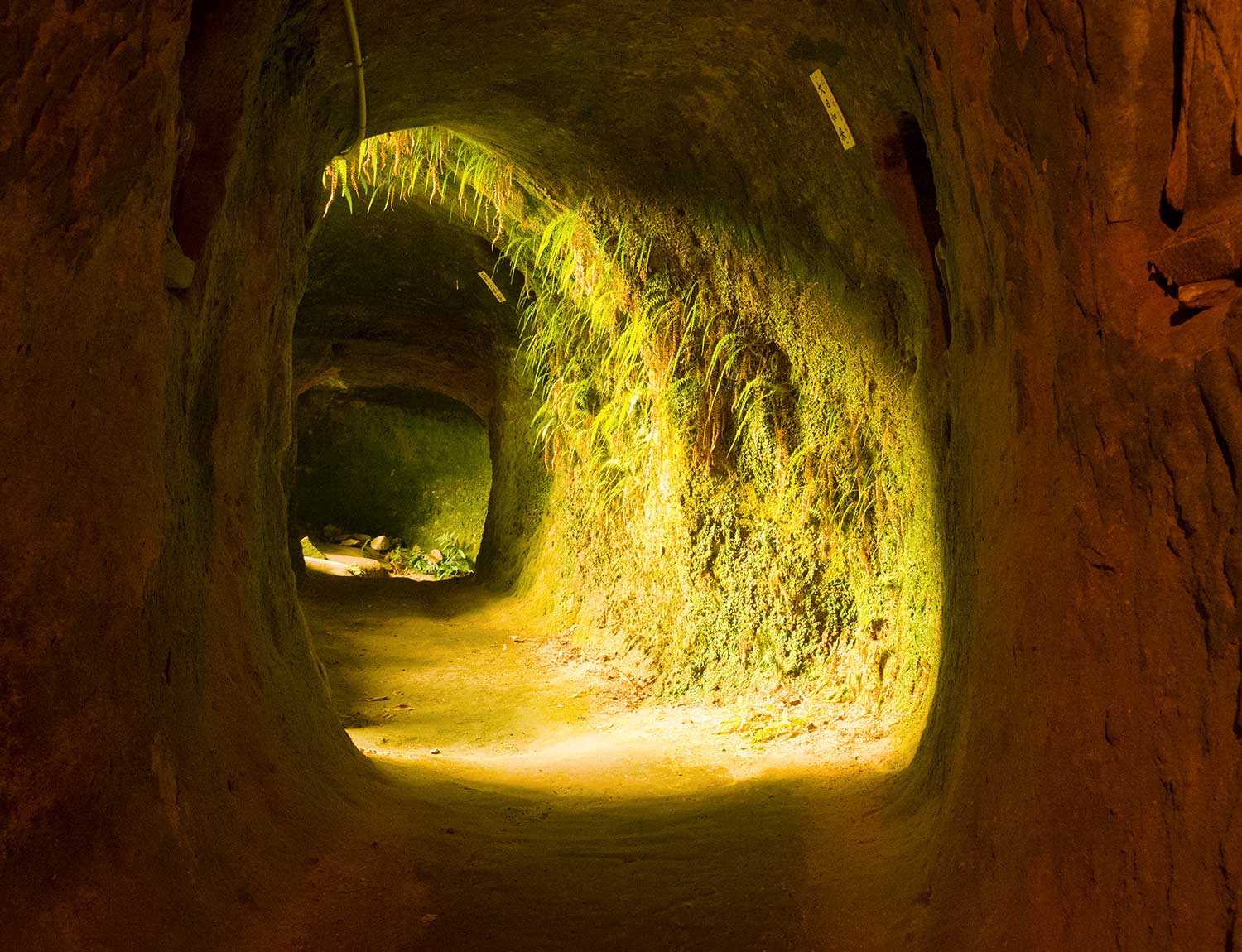
Kumahachi Aburaya
Dignified statues celebrating heroines and heroes, stateswomen and men, and local personages are…

A sign at the foot of the short flight of steps leading up to an unassuming hut, the sole structure left in the grounds of this now sleepy but once much grander temple, indicates the way in Japanese characters to Jigoku Gokuraku, or Hell and Heaven. The Ajimu Winery is nearby, and, depending on how attractive the tasting bar has been, the scenes found within the caves here could perhaps serve as a metaphor on the visitors’ various states of sobriety.
In 1820, long after Keisho-ji had been abandoned, the monk Godo Hoin set about turning the small system of man-made caves, found at the rear of the precincts, into a symbol of all our fears and hopes; a graphic depiction suffering of hell and the pleasures of heaven that may await us in the afterlife.
Entering the caves, the first chamber, a dank and dimly lit space, houses the court of the netherworld. Here a cantankerous-looking statue of Enma, flanked by his ogre-ish horse-headed and ox-headed co-adjutants, sits in judgement on souls departing this earth.
From here on, however, there is no choice but to enter the hell realm. Progress is constricted as the passageway narrows and the ceiling lowers. Everyone making their way through here are spied on by devils in alcoves lining the route, which leads to another small chamber containing the chi-no-ike blood pond. Here two devils, one blue and the other red, stir the morbid waters, where the worst sinners spend eternity swimming while being subject to endless tortures.
Walk further on, however, and the visages on the ever present devils gradually lose their grimaces and soften as the passageway widens, and daylight begins to flood in. Finally, a row of serene, smiling Buddha statues await at the exit into broad daylight and the open skies of paradise.